calsfoundation@cals.org
Presbyterians
American Presbyterians have always emphasized mission, evangelism, education, and reform, but disagreement over theology, governance, and reform resulted in the denomination splitting and parts reuniting several times. Currently, the largest group is the Presbyterian Church, USA (PCUSA), formed in 1983 when the “Southern” Presbyterian Church in the U.S. (PCUS) and the “Northern” United Presbyterian Church in the U.S.A. (UPCUSA) reunited. (The union of the PCUSA and the United Presbyterian Church of North America in 1958 had created UPCUSA). Other Arkansas denominations include Cumberland Presbyterian Church (CPC), the Presbyterian Church in America (PCA), and the Associate Reformed Presbyterian Church (ARP). The Presbyterian Church is a connectional church. Individual congregations are connected to other congregations through three governing bodies: presbytery, synod, and the general assembly.
Founders of Arkansas Presbyterianism: Cumberland Presbyterians
The Presbyterian denomination first came to Arkansas Territory with John P. Carnahan from Kentucky’s Cumberland Presbytery. Accounts differ as to whether he preached his first sermon at Arkansas Post (Arkansas County) in 1811, when the Carnahan and Pyeatte families arrived by flatboat, or a year later in Crystal Hill (Pulaski County), where the group moved. In November 1812, Cumberland Presbytery commissioned him to form a circuit to the settlements along the Arkansas River. He labored alone until 1823, when the Cumberland Synod (formed in 1813) established an Arkansas Presbytery, with Carnahan as one of its four minister members. (This presbytery had departed from the PCUSA in 1800 because of theological differences and educational requirements. It was not until 1825 that the PCUSA formally recognized the CPC as a denomination.) During the next decade, churches were organized in the Batesville (Independence County) area, along the Arkansas River, and in southwest Arkansas. Circuit riders had prescribed schedules. In 1827, the Carnahan and Pyeatte families moved from Crystal Hill to Cane Hill (Washington County). In October 1828, Carnahan organized the first Sabbath school in the territory of Arkansas in James Buchanan’s home. This became the Cane Hill School, which opened in April 1835; its primary purpose was to train pastors. In 1843, Reverend Aaron Shelby was the first representative of the Arkansas Synod at the General Assembly.
Before the Civil War, the CPC voted to stay out of politics and deal only with matters of faith and morals. The denomination had seventy-one church structures in 1860, but the war brought great destruction to church property. Many ministers were involved either as chaplains or as enlisted men on both sides. The General Assembly, in 1864, resolved that any Cumberland Presbyterian church who supported the Confederates could not participate in the national meetings; most Southern delegates stayed away until 1868.
In early 1906, CPC had 11,203 members in Arkansas. Later that year, the merger of the Cumberland Presbyterian Church with the Presbyterian Church, USA, succeeded, but with much controversy; Cumberland Presbyterians who refused to merge were left with little money or experienced leadership; most ministers worked two jobs. Some churches lost property in lengthy court battles with PCUSA. In 1929, the total CPC membership was 4,135.
Presbyterians in Arkansas: Presbyterian Church, USA
Presbyterian Church, USA, historians record Pennsylvanian James Wilson Moore as the “Father of Presbyterianism in Arkansas.” Moore was ordained as a missionary for Arkansas Territory in late 1827. Arriving in Little Rock (Pulaski County) on January 25, 1828, Moore found only three white people and three slaves professing Christianity in the nineteen families of about 100 people. He preached his first sermon the following Sunday in Jesse Brown’s log schoolhouse on 3rd Street. Within a week, Moore held a prayer meeting and formed a Sunday school. Soon, special prayer services collected money for mission work. On July 27, 1828, Moore organized the First Church of Little Rock, a foreign mission church in the Presbytery of Mississippi and South Alabama. Charter members were Dudley D. Mason, Christiana Mason, Elizabeth Martin, Catherine Eller, Matilda Hall, Priscilla Smith, and Jesse Brown.
In 1833, Dr. Daniel L. Gray, the second minister in Arkansas Territory, organized a church in Jackson County. In 1855, he established and served churches at Wattensaw (Lonoke County) and Des Arc (Prairie County) until his death in 1863 or 1864.
In Little Rock, on April 16, 1835, the Presbytery of Arkansas, which included the eastern part of Indian Territory, was formed. James Wilson Moore and two missionaries to the Choctaw Nation, Alfred Wright and Loring S. Williams, were present. Alexander R. Banks was accepted at the 1838 Presbytery meeting and soon organized the third Presbyterian congregation at Spring Hill (Hempstead County). In 1842, churches in Washington (Hempstead County) and Batesville were organized, followed by churches in Union, Jackson, Ouachita, Sebastian, and Prairie counties. In 1846, James Wilson Moore was commissioned to the General Assembly in Philadelphia, giving the frontier Arkansas Presbytery its first voice in the national governing board.
In 1848, Arkansas Presbytery divided, and churches south of the Arkansas River formed the Ouachita Presbytery. The General Assembly meeting at Charleston, South Carolina, in 1852 created the Synod of Arkansas, which included Arkansas and Indian Territory. In 1902, on its fiftieth anniversary, the Synod of Arkansas contained four presbyteries: Arkansas, Ouachita (which met in El Dorado in Union County, 1849,) Pine Bluff in Jefferson County (organized 1883), and Washburn in Sebastian County (convened in Fayetteville in Washington County, 1885). In 1904, Arkansas had 5,622 members in PCUS.
Kentuckian Joshua Fry Green ministered to First Church in Little Rock from 1847 to 1853. Then appointed as Arkansas’s missionary agent and evangelist, he traveled for eighteen months on horseback, preaching almost daily, raising money for missionary support, and creating or building up churches. In 1854, while returning from Virginia, he became ill, developed cholera, and died at age thirty-three. His zeal strengthened Presbyterianism and Protestant Christianity statewide.
Thomas Rice Welch came to Helena (Phillips County) from Kentucky in 1851. He was the lone minister in eastern Arkansas. In 1859, he became pastor of First Church in Little Rock. During the Civil War, he remained in Little Rock, ministering to both sides. He was instrumental in the organization of Little Rock’s Second Church.
Before the Civil War, Arkansas Presbyterian ministers supported missions worldwide and locally. Ouachita Presbytery set apart buildings for Black people and cooperated with other presbyteries in evangelistic work among the slaves, who had “religious privileges and the right to humane treatment.” Steps were taken to “relieve their spiritual needs.”
The Presbyterian Church, USA, contained fifty-two facilities in 1850 and sixty-five in 1860 in Arkansas. The Civil War interrupted growth, but most Presbyterians remained loyal to the South. At a meeting in Pine Bluff (Jefferson County) in 1861, the Arkansas Presbytery renounced its allegiance to the Presbyterian Church, USA, and united with the Presbyterian Church in the Confederate States of America. After the Civil War, the Presbyterian Church remained divided; the Southern states then became the Presbyterian Church in the U.S. (PCUS).
From 1906 until 1973, Arkansas had three Presbyterian denominations in Arkansas: CPC, PCUSA (which claimed over 10,000 members from CPC), and PCUS. In the 1920s a total of 21,901 Presbyterians from all three denominations made up 1.25 percent of Arkansas’s population. The Presbyterian Church of America (PCA) organized as a conservative spin-off from the PCUS in 1973, making it the fourth.
Associate Reformed Presbyterian Church
The Associate Reformed Presbyterian Church (ARP) was organized in Philadelphia, Pennsylvania, in 1782, the result of a merger between most of the Reformed Presbyterians and the Associate Presbyterians who had immigrated to America from Scotland and Ireland in the days before the American Revolution. ARP numbers in Arkansas have been smaller than other denominations. The first ARP settlers arrived in the early 1850s, and the Arkansas Presbytery of the ARP Church was organized in Pottsville (Pope County) in 1861. From there, daughter churches reached primarily into Little Rock and southeastern Arkansas.
Presbyterian Education in Arkansas
All Presbyterian denominations felt responsible for providing educational opportunities. In 1821, near Russellville (Pope County), Cephas Washburn founded Dwight Presbyterian Mission, the first American Indian mission west of the Mississippi River, which served arriving Cherokee. In 1844, he was instrumental in establishing a short-lived college in Washington County for educating white and Indian students. Washburn served as the primary Indian missionary in the region until 1850, when he became minister of First Presbyterian Church in Fort Smith (Sebastian County), serving until 1856. He is often referred to as “The Apostle to the Cherokees” and “Builder of Presbyterianism in Arkansas.”
The oldest institution, the Cumberland Presbyterians’ Cane Hill College, began in 1834 in Cane Hill, near Fayetteville. Except for the Civil War, it remained open until 1891, producing the first Arkansas college female graduate in 1872. Renamed Arkansas Cumberland College (now University of the Ozarks), it moved to Clarksville (Johnson County) in September 1891, but the CPC lost control after the 1906 merger with the PCUSA.
Early Presbyterian ministers often supplemented their salaries by teaching, usually providing room and board for students. In 1838, Alexander R. Banks from South Carolina organized a church, plus the Female Academy in Spring Hill. He evangelized and assisted his wife in educating girls in southwestern Arkansas until the Civil War. In 1840, James Wilson Moore established Sylvania Academy for boys, teaching there for twenty-five years. In 1843, Moore established Sylvania Presbyterian Church near Cabot (Lonoke County). Moore is buried in the cemetery there.
Arriving to Arkansas in 1866, Kentuckian Dr. Isaac Jasper Long was instrumental in the formation of Arkansas College (now Lyon College) in Batesville in 1872. This Presbyterian liberal arts institution is the oldest independent college in Arkansas still operating under its original charter. John Jefferson Lee Spence, a member of the Associate Reformed Presbyterian Church, founded Beauvoir College (originally the Drew Normal Institute) in 1897, but the college closed a decade later.
Education and the care and nurturing of children continued into the twentieth century. Today’s Vera Lloyd Presbyterian Family Services in Monticello (Drew County) began in 1910 after twin girls were abandoned at the train station. Without proof that they were true orphans, the girls were ineligible for state orphanages, but they were taken to a nursery supported by Presbyterians. It was named Vera Lloyd in 1924 and continues to offer a haven for children.
Dr. John Tilman Barr served fifty-one years in western Arkansas in the “toughest Home Mission area in the United States.” As pastor of twelve rural churches and several logging camps, he also regularly held assemblies in sixty Ouachita Mountain schools. In 1921, in Norman (Montgomery County), he opened the Presbyterian-funded Caddo Valley Academy, the county’s first certified high school. In 1930, when the state began funding secondary education, Caddo Valley Academy continued as a Presbyterian home for needy children. In 1962, its children were moved to the Vera Lloyd Home.
Arkansas Presbyterianism in the Twenty-First Century
Presbyterian leaders have often advocated controversial social and education reforms. In 1954, the Southern Presbyterian Assembly became the first major national denomination to endorse the decision of the Brown v. Board of Education of Topeka, Kansas, and the next year, the College of the Ozarks removed its racial barriers. Presbyterians (PCUS) began ordaining women as ministers, elders, and deacons in the 1960s. In 1982, in the case McLean v. Arkansas Board of Education, UPCUSA Presbyterians succeeded in their appeal to abolish Act 590, which would have mandated the teaching of creationism in classrooms where evolution was taught. Because many small churches could not afford clergy, in 1994, the Arkansas Presbytery created the Lay Academy, which provides an in-depth education for lay people to become commissioned lay pastors. Finally, the northwestern Arkansas Hispanic ministry began in 2001, offering an outreach to Arkansas’s Hispanic population.
Presbyterian women have long been involved with mission work. Their Thank Offering began in 1888 as sacrificial giving, aiding the Presbyterian worldwide missionary movement. Today’s Presbyterian Women (PCUSA) organization is an advocate for women, children, and minorities by nurturing faith, supporting mission, working for justice, and building community.
Arkansas’s two presbyteries (PCUSA) belong to the Synod of the Sun. In 2011, the Presbytery of Arkansas had 15,400 members in ninety-three congregations. At the end of 2022, it reported having 7,815 members in seventy-seven congregations (although it is probable that not all congregations reported their membership to the national headquarters). Nineteen churches in southern Arkansas with approximately 2,000 members belong to the Presbytery of the Pines, headquartered in Louisiana. Part of the Great Rivers Synod, Arkansas’s Cumberland Presbyterian churches have their own Arkansas Presbytery with sixty-two churches and 2,152 active members. The conservative Presbyterian Church in America has nine congregations in the state, while the Associate Reformed Presbyterians have four.
For additional information:
Bolton, S. Charles. Arkansas, 1800–1860: Remote and Restless. Fayetteville: University of Arkansas Press, 1998.
Campbell, Thomas H., et al. Arkansas Cumberland Presbyterians 1812–1984: A People of Faith. Memphis: Frontier Press, 1985.
The History of Presbyterianism in Arkansas 1828–1902. Little Rock: Press of Arkansas Democrat Co., 1902.
Mosley, James W. “Episodes Representing Arkansas Presbyterianism in the20th Century.” Paper delivered at the Presbyterian Historical Society of the Southwest 23rd Annual Meeting. Austin, Texas, March 11, 2000.
Presbytery of Arkansas. https://presbyark.org/ (accessed April 25, 2023).
Smylie, James H. A Brief History of the Presbyterians. Louisville, KY: Geneva Press, 1996.
Mary B. Lysobey
Montgomery County Historical Society
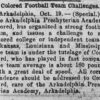 Arkadelphia Presbyterian Academy
Arkadelphia Presbyterian Academy Cotton Plant Academy
Cotton Plant Academy Monticello Academy
Monticello Academy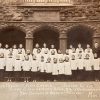 Ogden, Dunbar H., Jr.
Ogden, Dunbar H., Jr. Religion
Religion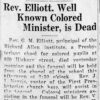 Richard Allen Institute
Richard Allen Institute Smith, Hay Watson
Smith, Hay Watson Williams, Claude Clossey
Williams, Claude Clossey Arkadelphia Presbyterian Church
Arkadelphia Presbyterian Church 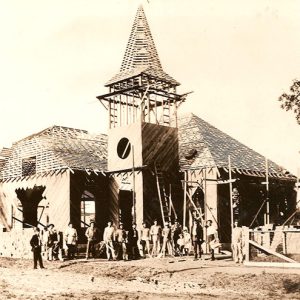 Atkins Church
Atkins Church  Augusta Heritage Center
Augusta Heritage Center 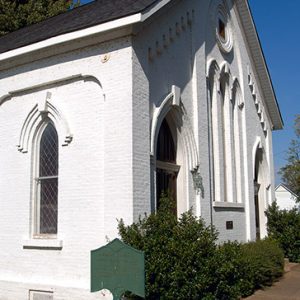 Augusta Presbyterian Church
Augusta Presbyterian Church 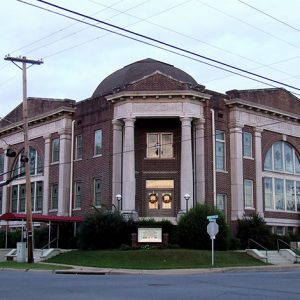 Clarksville Presbyterian Church
Clarksville Presbyterian Church  Cumberland Presbyterian Congregations
Cumberland Presbyterian Congregations 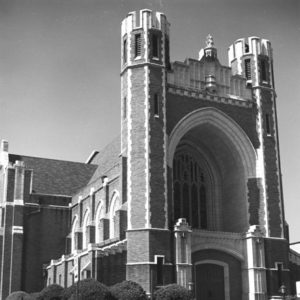 First Presbyterian Church
First Presbyterian Church 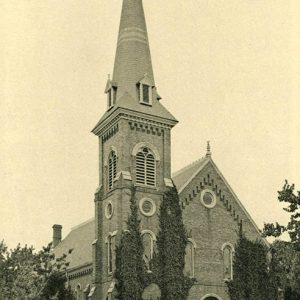 First Presbyterian Church
First Presbyterian Church 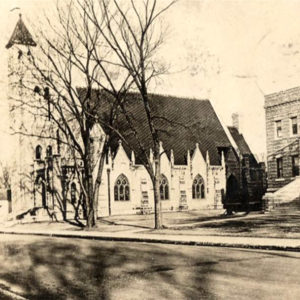 Fort Smith Presbyterian Church
Fort Smith Presbyterian Church 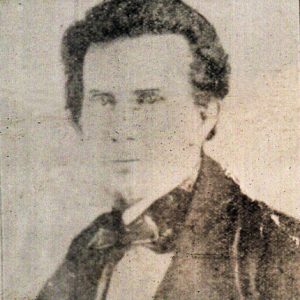 James Moore
James Moore  Hay Watson Smith
Hay Watson Smith 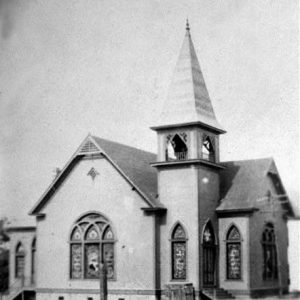 Stamps Presbyterian Church
Stamps Presbyterian Church 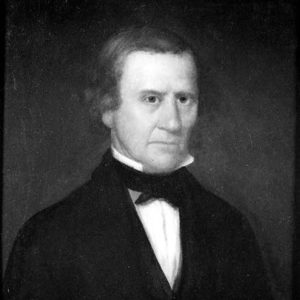 Cephas Washburn
Cephas Washburn 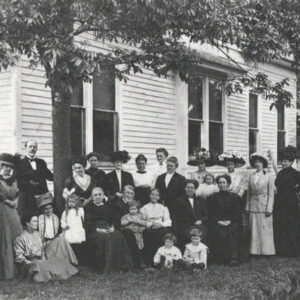 Wynne Society
Wynne Society 




Comments
No comments on this entry yet.